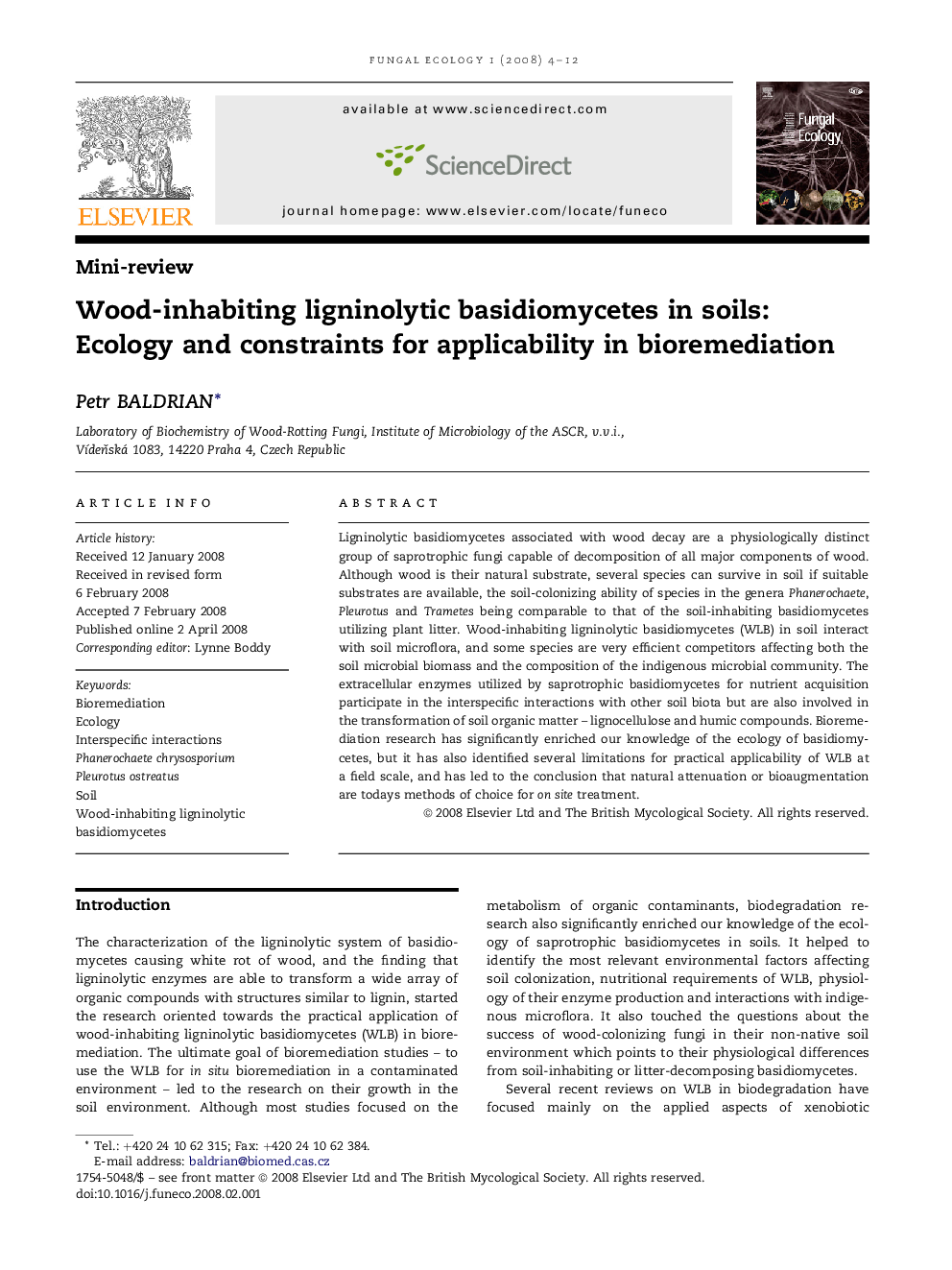| Article ID | Journal | Published Year | Pages | File Type |
|---|---|---|---|---|
| 2053771 | Fungal Ecology | 2008 | 9 Pages |
Ligninolytic basidiomycetes associated with wood decay are a physiologically distinct group of saprotrophic fungi capable of decomposition of all major components of wood. Although wood is their natural substrate, several species can survive in soil if suitable substrates are available, the soil-colonizing ability of species in the genera Phanerochaete, Pleurotus and Trametes being comparable to that of the soil-inhabiting basidiomycetes utilizing plant litter. Wood-inhabiting ligninolytic basidiomycetes (WLB) in soil interact with soil microflora, and some species are very efficient competitors affecting both the soil microbial biomass and the composition of the indigenous microbial community. The extracellular enzymes utilized by saprotrophic basidiomycetes for nutrient acquisition participate in the interspecific interactions with other soil biota but are also involved in the transformation of soil organic matter – lignocellulose and humic compounds. Bioremediation research has significantly enriched our knowledge of the ecology of basidiomycetes, but it has also identified several limitations for practical applicability of WLB at a field scale, and has led to the conclusion that natural attenuation or bioaugmentation are todays methods of choice for on site treatment.
